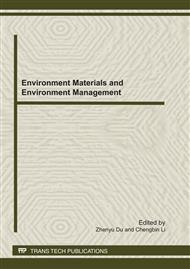[1]
Matousek. Research developments in pipeline transport of settling slurries. Powder Technology. vol. 156, pp.43-51, (2005).
DOI: 10.1016/j.powtec.2005.05.054
Google Scholar
[2]
Y.S. Fangary, A.S. Abdel ghani, S.M. El haggard, R.A. Williams. The effect of fine particles on slurry transport processes. Minerals Engineering. vol. 10, pp.427-439, (1997).
DOI: 10.1016/s0892-6875(97)00019-8
Google Scholar
[3]
Matousek. Pressure drops and flow patterns in sand-mixture pipes. Experimental Thermal and Fluid Science. vol. 26, p.693–702, (2002).
DOI: 10.1016/s0894-1777(02)00176-0
Google Scholar
[4]
K.C. Wilson. Slip point of beds in solid– liquid pipeline flow. Journal of the Hydraulics Division. vol. 96, pp.1-12, (1970).
DOI: 10.1061/jyceaj.0002250
Google Scholar
[5]
K.C. Wilson, M. Streat, R.A. Bantin. Slip-model correlation of dense two-phase flow. Proc. 2nd Int. Conf. on Hydrotransport. BHRA, Warwick, UK. pp. B1-1-10. (1972).
Google Scholar
[6]
A.C. Korving. High-concentrated fine-sand slurry flow in pipe-lines: experimental study. 15th Int. Conf. on Hydrotransport. BHRG, Banff, Canada, p.769– 776, (2002).
Google Scholar
[7]
V. Matousek. Non-stratified flow of sand –water slurries. N. Heywood (Ed. ), Proc. 15th Int. Conf. on Hydrotransport, BHRG, Banff, Canada. p.563–574, (2002).
Google Scholar
[8]
Xiangjun Fei. Physical characteristics of slurries and the transporting velocity in pipelines. Technology in Pipeline and Equipment. vol. 1, pp.4-8, (2000).
Google Scholar
[9]
V. Matousek. Partially stratified flow with turbulent suspension in a Pipe. J. Sobota, R. Verhoeven (Eds. ), Proc. 11th Int. Conf. on Transport and Sedimentation of Solid Particles. p.391–398, (2002).
Google Scholar
[10]
J. Schaan, R.J. Sumner, R.G. Gillies, C.A. Shook. The effect of particle shape on pipeline friction for Newtonian slurries of fine particles. Canadian Journal of Chemical Engineering. vol. 78, p.717– 725, (2000).
DOI: 10.1002/cjce.5450780414
Google Scholar
[11]
V. Matousek. Distribution and friction of particles in pipeline flow of sand-water mixtures. Handbook of Conveying and Handling of Particulate Solids, Elsevier. p.465–471, (2001).
DOI: 10.1016/s0167-3785(01)80048-8
Google Scholar
[12]
L. Pullum, L.J.W. Graham. The use of magnetic resonance imaging MRI) to probe complex hybrid suspension flows. J. Sobota (Ed. ), Proc. 10th Int. Conf. on Transport and Sedimentation of SolidParticles, Wroclaw, Poland. p.421–433, (2000).
Google Scholar
[13]
D.R. Kaushal, Kimihiko Sato, Takeshi Toyota, Katsuya Funatsu, Yuji Tomita. Effect of particle size distribution on pressure drop and concentration profile in pipeline flow of highly concentrated slurry. International Journal of Multiphase Flow, vol. 31. pp.809-823, (2005).
DOI: 10.1016/j.ijmultiphaseflow.2005.03.003
Google Scholar
[14]
D. R. Kaushal, Yuji Tomita, R. R. Dighade. Concentration at the pipe bottom at deposition velocity for transportation of commercial slurries through pipeline. Powder Technology. Vol. 125, pp.89-101, (2002).
DOI: 10.1016/s0032-5910(02)00031-1
Google Scholar
[15]
Le Huynh, Paul Jenkins, John Ralston. Modification of the rheological properties of concentrated slurries by control of mineral–solution interfacial chemistry. International Journal of Mineral Processing, vol. 59. pp.305-325., (2000).
DOI: 10.1016/s0301-7516(99)00082-4
Google Scholar
[16]
Xiangjun Fei. Hydraulics of conveying slurries and granular materials. Tsinghua Press, Beijing, (1994).
Google Scholar


